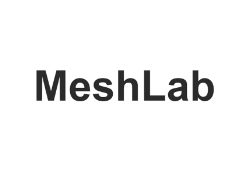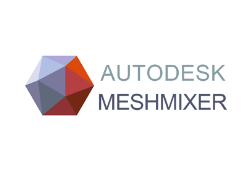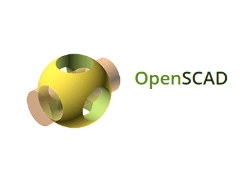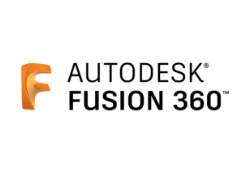Best 3D Printing Software in 2025
Updated: September 12,2023
While we are still a long way from Star Trek-level replicators, 3D printers bring science fiction closer to reality every day. As the prices of these intriguing devices grow nearer to those of paper printers, we can expect that soon, every household will have one.
However, the fancy hardware would be useless without 3D printing software. Some of the best 3D printing software currently available is open-source software that’s easily found online and downloadable for free. We’ll show you a few solutions that can help you turn everything from basic shapes to complex mechanical engineering models into reality. with a little help from the Internet of things.
- An advanced professional tool
- Community resources
- Feature-rich
- Achieving mastery takes a lot of time and effort
Blender is some of the most popular and powerful modeling programs out there, and it’s often lauded as the best design software for 3D printing. It’s a piece of open-source software that combines multiple advanced features you’d expect from software like 3D Studio Max or Maya.
However, it’s not easy to master, and beginners will need to invest a considerable amount of time and effort to overcome the steep learning curve. Fortunately, Blender has a dedicated community willing to help out and plenty of learning materials online, such as video tutorials and helpful literature.
This amazing software package can do a lot of things apart from 3D printing: It’s full to the brim with software tools for modeling, rendering, sculpting, animation, rigging, rendering postproduction, 2D drawing, simulation, pipeline integration, video editing, and scripting, which is why it’s often favoured by indie video game developers. If modeling software for 3D printing interests you, then this is the perfect solution for you.
Blender’s user interface can be overwhelming for 3D modeling novices. As you grow accustomed to it, you’ll likely start to lean a lot on keyboard shortcuts to speed up your modeling process. This will come naturally to advanced users of CAD software, since they almost exclusively rely on the keyboard instead of using program menus.
Thanks to Blender’s open-source nature, plenty of community-created add-ons that further expand and improve its functionality are available. One such add-on is the 3D Print Toolbox that makes Blender the best software for 3D printing with advanced features. This add-on calculates your model’s overhang and volume and detects if the model’s mesh needs repairing before printing.
The add-on will show you any issues with your model and which points need to be fixed before printing the file. The most common problems are undefined geometry in mesh intersections, overhang, and thin walls. Resolving these issues before printing is vital, and Blender will show you how to fix them.
Blender is fantastic for designing both organic and nonorganic models and for printing. However, it isn’t intended for engineering industrial parts that require a high level of precision. There are 3D printer CAD software solutions better suited for accurate measurements that engineers or industrial designers will prefer.
Blender is also brilliant free CAD software for artists. With it, you’ll be able to create models with an insanely high polygon count - one of the key features responsible for great-looking prints.
- Easily handles large files
- A wide selection of mesh repairing tools
- Perfect for processing 3D scanned models
- Not very user friendly
MeshLab, as the name suggests, is an advanced mesh editor. This cross-platform 3D print and modeling software started as an assignment for students of the University of Pisa. The goal of this 2005 project was to build a solution for processing 3D models after 3D scanning. MeshLab evolved into a free, open-source software for processing and editing 3D triangular meshes. It packs a rich list of key features that can help edit, clean, inspect, repair, render, and texturize meshes.
The process of 3D acquisition is made possible by aligning, reconstruction, color mapping, and texturizing. 3D data alignment is an essential part of the 3D scanning process, and MeshLab is a powerful tool in providing a common reference system for the processed data.
The best 3D printer software will be able to clean up the model before printing. While simplification is not always preferred in 3D printing, MeshLab is perfectly capable of reducing the number of the model’s polygons while preserving as much detail as possible.
MeshLab can export files in the STL format, one of the most commonly used file formats for 3D printing. It can easily prep them, make slicing simpler by resampling the model, hollowing it out, creating a watertight mesh, or flattening the model’s bottom side to firmly secure it on the printing surface.
MeshLab stands out as the best 3D print software for repairing 3D models and preparing them for printing. So, if you need free software that’ll help you remove small isolated components of your model, fill out holes, and remove nonmanifold areas, MeshLab is ideal for you.
Unfortunately, MeshLab’s doesn’t exactly have an intuitive interface: It looks a bit clunky compared to the elaborate menus and commands in programs like Blender. On the plus side, the software is exceptionally optimized for limited memory space, so you won’t have issues opening complicated models on lower-than-average configurations. It’s one of the best software tools for fantastic color mapping and texturing, so you’ll end up with awesome-looking textured models.
MeshLab has some exciting advantages compared to its competition. It’s the best 3D software for 3D printing scanned models we’ve tested. It’s also excellent for rapid prototyping and model repair, and anyone who’s ever tried to print unadjusted models will know how important that is.
- Simple user interface
- A wide selection of mesh repairing tools
- Great printing prep tools
- Focused solely on 3D printing
Meshmixer is a must-try tool for anyone who owns a 3D printer. This free Autodesk-developed application is packed with practical features that make it stand out as top 3D printing software.
The program is easy to master: When you fire it up, you will be prompted to import, open, or use one of the preset objects. Of course, we had to do our testing with the default bunny model before using our testing prints. Meshmixer can handle a decent range of file formats. You can use STL (both ASCII and Binary STL), OBJ, AMF, PLY, OFF, 3MF, and MIX. Note that it works best with OBJ files and has the best support for that file format.
Even the best 3D print software may need a bit of adjusting before you can start printing. However, with Meshmixer, this is just a minor issue concerning XYZ-axis orientation. 3D printers traditionally use Z-axis for the model’s height, while X and Y form the printer plate base. Meshmixer uses Y-axis for height, so keep that in mind when importing your models.
The user interface is simple and cleverly designed. Viewing the model is easy, and you have all the essential camera controls like pan, rotate, and zoom. What makes Meshmixer one of the best programs for 3D printing is a set of advanced features for model-prepping. You can quickly resize your model using the Transform Tool Panel or 3D Transform Widget. There are several shader options you can use for displaying 3D models. The most useful one for 3D printing is the Overhang. It’ll mark all the spots on the model that’ll require supports for printing in red.
Meshmixer has a list of supported 3D printers. However, if your printer isn’t on the list, you can easily set printing volume or import settings. The reason Meshmixer is the best Autodesk software for 3D printing is its toolkit for making your model or mesh easily printable.
The Plane Cut tool can be used to dissect your model into smaller, more easily printable pieces. You can hollow it out to save time and printing material. If you are using a resin printer, you can add holes to release the excess material and reuse it. 3D printing beginners will be pleased to know that Meshmixer can automatically or manually create supports for any overhang area on the model.
The sheer abundance of features makes Meshmixer the best 3D printing software for both newbies and advanced users.
- Great for educational purposes
- Code-based parametric design
- Community libraries
- Can be difficult and time-consuming to use for beginners
If you are on the lookout for something completely different from traditional CAD software, OpenSCAD may just be the thing for you. Most CAD software depends on the parameter input for objects you are creating. However, OpenSCAD’s key features enable an even more hands-on approach to user input: This 3D printer CAD software lets your program the design of your 3D models directly.
Designing models by inputting code can be quite exciting and produce very creative results. The parametric input of OpenSCAD allows users to create easily customizable models by changing a few numerical values. The best use case for this is Thingiverse’s customizer. Any 3D model that supports this function can have specific parameters altered and saved to an STL file ready for download and printing.
While OpenSCAD is the best CAD program for 3D printing objects created through parametric modeling, it’s also excellent for those interested in learning to code. Having a visual representation of the inputted code is excellent for keeping students’ learning motivation high and experimenting with code combinations for varying results.
With OpenSCAD, any model can be hosted as code on platforms like GitHub and shared with the community. So on top of being the best CAD for 3D printing, it’s also open-source and free to use. OpenSCAD’s community loves sharing designs, models, and advice.
Despite all these positive aspects of OpenSCAD, this is a tool aimed at advanced users: Inexperienced designers will find it difficult to get used to this modeling method. It’s complex and may require more time compared with other software solutions. Designing complex models, especially organic shapes (those which don’t follow a pattern that can be easily translated into lines of code), is challenging.
Most importantly, any designs can be saved as STL files ready for input into your slicing software of choice.. This modeling software for 3D printing can be a powerful tool to learn programming basics and create parametric parts and exciting models, all for free.
- Great for product design and manufacturing
- CAD and freeform design
- Cloud element analysis
- Trial version for up to 1 year
Another brilliant Autodesk product that has a fantastic amount of features is Fusion 360. The software is designed for CAD and CAM (computer-aided manufacturing), with plenty of features that mechanical engineers, industrial designers, and hobbyists will appreciate. If you are looking for the best CAD for 3D printing and designing anything from a screw to an electric car, look no further - Fusion 360 is the tool for you.
This solution is more than capable of designing industrial parts. Multiple techniques, like freeform, mesh, and parametric modeling are available. With Fusion 360, you can truly unleash your creativity.
Fusion 360 has a free version along with a paid software version. As you’d expect from a solution that offers robust 3D modeling software for 3D printing, manufacturing, and stress-testing, some key features are locked behind a paywall. Still, if you need a cloud-simulated finite element analysis of the parts you are producing, a Fusion 360 subscription will certainly pay off.
Nonetheless, if you just want to test the program and don’t need multiaxis milling, adaptive manufacturing, or plasma cutter functionality, you’ll still have a lot to try out. The trial period lasts for one year, and during that time, you’ll probably get used to the program so much that switching to a paid subscription will become the logical next step.
Fusion 360 has the best 3D stands out from the competition thanks to its collaboration tools. Sharing your work is as simple as sending a link the recipient can view as a 3D model in their browser.
Fusion 360 comes with mobile apps for Android and iOS, which support over 100 file formats. These are entirely free and can be used for project collaboration. They can be used to track project activities, review designs, share information, and review assemblies.
In January 2020, the functionality of Fusion 360 was further expanded by adding electronics design. Users can now design PCB layouts and electronic circuits.
Let’s sum up the key features making Fusion 360 the best 3D printer design software: First of all, it incorporates slicing software and prepares your files for printing, exporting them as G-Code to your printe. And finally, it supports metal additive manufacturing, which most free programs don’t.
Top 3D Printing Software in 2025
- Blender
- Autodesk Fusion 360
- Autodesk Meshmixer
- OpenSCAD
- MeshLab
Choosing the Right 3D Printing Software - Our Evaluation Method
If you are at the beginning of your 3D printing adventure, you may feel overwhelmed by the amount of information available on the Internet. Don’t panic; we’re here to break it down for you and help you become a 3D printing pro.
When choosing the best 3D printing software for your needs, consider the following factors.
Price
While the price is the most apparent limitation for most users, there are still plenty of software solutions to choose from on a tight budget. Many programs with paid versions have free trials or are free for personal and/or educational use, and they share many of their key features with top-of-the line programs.
Complexity
Some software solutions are adjusted toward beginners. Of course, a more user-friendly interface usually translates to somewhat limited functionality. On the other hand, advanced users will be more at home with programs which sacrificed a streamlined user interface in favor of complex customization features.
Application
Some types of software for 3D printing are better suited for mechanical engineering and industrial design, while others were made for artists working with organic models.
Types of Software
There are two basic types of software for 3D printers: slicers and 3D printer hosts.
Slicing software processes any 3D model to G-code - a computer numerical control programming language widely used by industrial-level machines. In this case, the software slices the 3D model into 2D layers and sends G-code instructions to the printer.
A 3D printer host handles the communication between the 3D print program and your computer. It also serves as slicer software, but has additional functionality. Its key features allow you to place multiple objects on a simulated printer bed, transmit instructions to your printer, and more.
Some software solutions bundle the 3D-printing functionality with powerful design features. For example, CAD programs will let you design anything from nuts and bolts to a helicopter.
On the other hand, some programs only review and repair 3D models before printing. This is quite useful because, if a 3D design isn’t prepared for printing, it may result in a failed print or defective model.
For this list of the best programs for 3D printing, we’ve analyzed modeling capabilities, preparation for 3D printing, user interface, file type support, and best use cases for each piece of software. We’ve prioritized software solutions that go well beyond regular slicers.
Benefits of 3D Printing and Design Software
As the name suggests, 3D printing can create 3D objects you’ve designed yourself, scanned, or simply downloaded from websites like Thingiverse or Pinshape. However, the real power of 3D printing lies in the fact it can be used for prototype creation, manufacturing spare parts, prosthetics, architecture, even for creating works of art. In short, a 3D printer is a large-scale version of a 3D pen.
Lower Production Costs and Decentralized Production
Let’s say you need a specific part to finalize your product and are currently buying that part from a third-party manufacturer. With a 3D printer and design software, you could replicate the required part, produce it on-site, and save money on buying and shipping from a retailer.
Prototyping Speed
The design process always entails prototype manufacturing to work out any rough edges and design flaws. 3D printing makes this step easy since you can quickly print out your design at any point in the development process.
Complex Design
With 3D printing, production limitations won’t influence the complexity of your design. Compared with traditional injection molding, 3D printer software has a different approach to producing an object. Models are created layer by layer, freeing you from the design constraints of conventional methods of production.
Printing on Demand
Unlike standard manufacturing, 3D printing doesn’t require traditional material storage. Whenever you need a part, you can just grab the right file and have it printed. 3D printing can save you space and reduce storage costs.
Customization
Since we most often use the same software to create and print our 3D models, it’s quite simple to edit your print beforehand. The best 3D modeling software for 3D printing allows you to change your model’s parameters and customize it with just a few clicks, with options that cater to both newcomers and advanced users.
Low Waste
3D printing works by adding material to the model you are printing in a process called additive manufacturing. There is no waste created by removing chunks of material, drilling holes, or sanding the object’s surface to get the desired shape.
Since 3D printing adds material in layers, some models require supports to act as scaffolding for the model. These supports are the only waste produced by 3D printing and most often can be recycled.
Improved Medical Application
3D modeling software for 3D printing is revolutionizing medicine as we speak. The most obvious uses are creating casts or prosthetics. They can be easily adjusted to patient needs to make more comfortable and higher-quality solutions than traditional methods.
As science progresses, 3D printing is pushed even further by bioprinting. By using living cells as printing material, scientists have produced artificial living tissue. While we’re still far from having 3D-printed organs used in transplant procedures, the possibilities are vast indeed.
Frequently Asked Questions
FAQ
For the program to communicate with your 3D printer, it needs to act as slicer software. That means it translates your model into horizontal layers in G-Code. By interpreting the G-Code, the printer creates the model using additive manufacturing.
The best slicing software for 3D printing will have additional functionalities besides communicating with your 3D printer. It’ll help you with positioning models on the printing plate, analyze if the model is printable, repair it, and create supports.
Since there are plenty of affordable programs that can serve as powerful sculpting, modeling, and CAD tools, selecting just one piece of software is a daunting task. In our review, we’ve found Blender to be the best overall tool for modeling and 3D printing and Fusion 360 to be the best CAD and CAM software package.
It all depends on what you need 3D print and design software for. If you’re looking for the most commonly used solution with a specialized focus on printing, we wholeheartedly recommend Autodesk Meshmixer. Meshmixer will also handle everything nicely if you prefer just downloading the files you need from Thingiverse. More advanced CAM solutions include Fusion 360 and Blender.
The best free slicer-only software we’ve reviewed is Autodesk Meshmixer. However, most programs we’ve listed here also have modeling features in addition to serving as slicers and 3D printer hosts. Many great 3D printer modeling software solutions are free, with advanced features comparable to those of expensive, subscription-based programs.
You don’t need dedicated slicer software to print your 3D models. Most advanced 3D modeling software’s key features include slicing capabilities. The model is sliced into layers, and the number of layers will depend on the printing resolution. The higher the resolution, the more layers will be translated into G-Code and sent to the printer.
If you’re not sure what software to use, check our guide on the best 3D printing software - you’ll surely find something that’ll fit your taste and printing needs.
Your email address will not be published.









